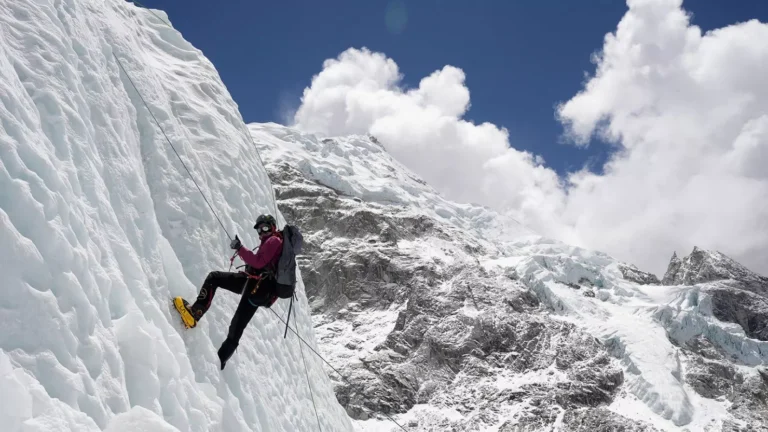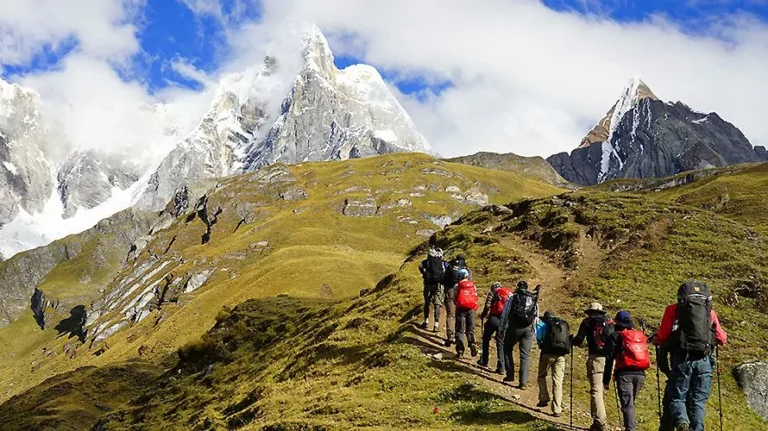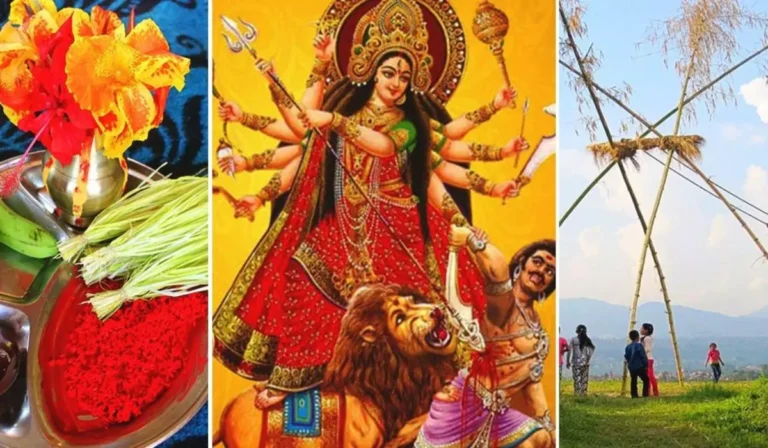- PUBLISHED
Top 7 Peaks For Climbing in Nepal

Peak climbing in Nepal offers a thrilling blend of adventure, culture, and breathtaking Himalayan scenery. Whether you’re a beginner aiming for accessible peaks like Pokalde or Mera, or an experienced climber tackling technical ascents like Lobuche East, Island Peak, or Chulu West, Nepal provides climbs for every skill level. Many routes follow or connect with iconic treks such as Everest Base Camp, adding depth to the experience. Nepal stands as the ultimate destination for those seeking to reach new heights and witness the grandeur of the world’s tallest mountains up close.
Each peak offers unique challenges, ranging from technical ascents to more accessible climbs, allowing adventurers to select their ideal mountain experience. In this blog, we will explore the details of these peaks, including altitude, difficulty, and climbing highlights, to help you prepare for an exciting and successful peak climbing journey in Nepal.
Lobuche Peak Climbing
Lobuche Peak is one of the most dramatic peaks of Nepal, sitting just beyond Everest Base Camp in the Khumbu region and reaching 6,119 meters at its East summit. As a popular “peak near Everest,” Lobuche East offers a moderately technical challenge that rewards climbers with sweeping panoramas of Everest, Lhotse, Ama Dablam, and other mountain peaks in Nepal. This climb pairs the classic Everest Base Camp trek with expert-led climbing in Nepal, making it an ideal choice for those looking to take on a major 6,000-meter peak.
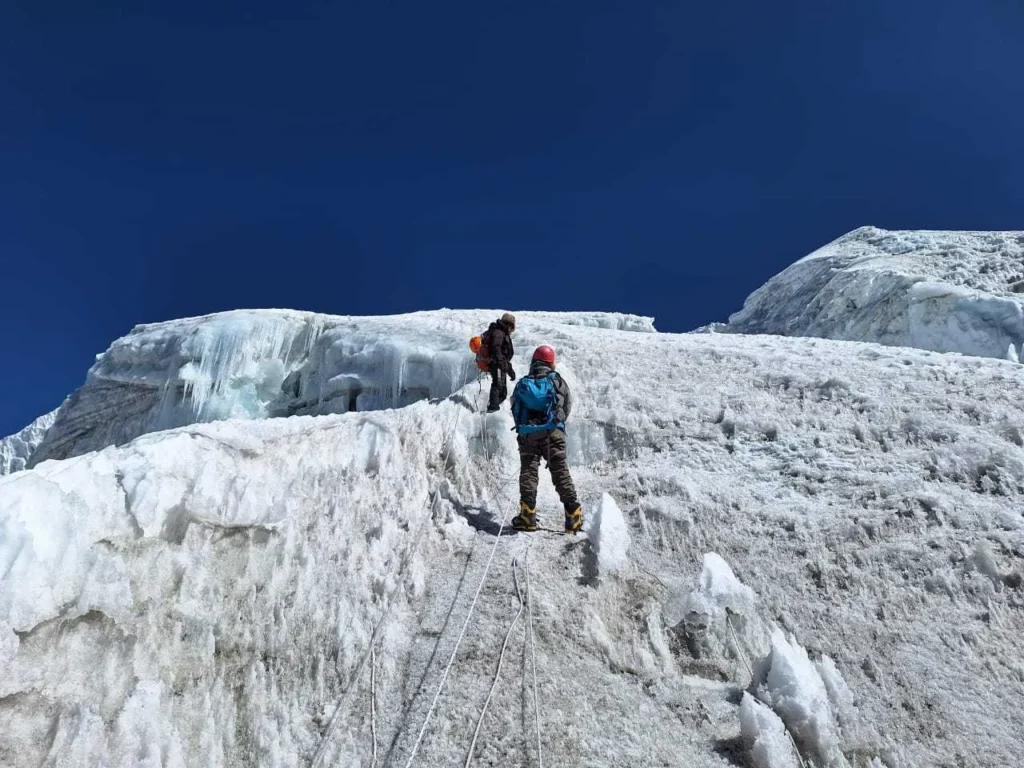
Trail Info
Your Lobuche Peak journey begins with a flight from Kathmandu to Lukla, then follows the Everest Base Camp trail through Sherpa hubs like Namche Bazaar and Tengboche to aid acclimatization. From Tengboche you trek to Dingboche beneath towering views of Ama Dablam and Lhotse, before arriving at Lobuche village.
Covering a one-way distance of approximately 155–220 km, you establish camp at Advanced Base Camp (4,950 m) to practice glacier travel, crevasse rescue, and fixed-rope techniques under expert guidance. Summit day starts before dawn, climbing mixed snow and rock slopes to the 6,119 m summit, truly the pinnacle of climbing a peak in Nepal.
Highlights
- Combines Everest Base Camp Trek with the technical ascent of Lobuche East
- Panoramic Himalayan vistas of Everest, Lhotse, Ama Dablam, and more
- Essential mountaineering skills training: fixed-rope climbing and crevasse rescue
- A great introduction to peak climbing challenging 6,000-meter mountains in Nepal that require mountaineering skills.
Mera Peak Climbing
Mera Peak is the highest trekking peak in Nepal, rising to 6,476 meters in the remote Khumbu region. It offers a rewarding gateway to peak climbing in Nepal for trekkers aiming to summit a Himalayan giant without technical challenges. From its summit, climbers are treated to panoramic views of five of the world’s tallest mountains, Everest, Lhotse, Makalu, Cho Oyu, and Kangchenjunga. Mera Peak is a perfect first step for those ready to combine adventure, altitude, and natural beauty.

Trail Info
The journey begins with a thrilling flight from Kathmandu to Lukla, followed by a quieter trail that passes through lush forests, traditional Sherpa villages, and scenic high passes. Unlike the crowded Everest Base Camp route, this trek offers solitude and cultural depth.
Most climbers aim for Mera Central (6,461 m), while Mera North reaches the true summit at 6,476 m. The one-way trekking distance is approximately 40 kilometers, and the final summit push follows a non-technical glacier route, ideal for fit trekkers climbing a peak for the first time.
Highlights
- Climb the highest trekking peak in Nepal at 6,476 meters
- Breathtaking views of Everest, Lhotse, Makalu, Cho Oyu, and Kangchenjunga
- A quieter and more remote alternative to Everest Base Camp trekking
- Excellent introduction to non-technical peak climbing in Nepal
Island Peak Climbing with Everest Base Camp Trek
This 22-day adventure blends the iconic Everest Base Camp trek with the technical challenge of Island Peak (6,189 m), making it one of the most complete experiences in peak climbing in Nepal. Perfect for trekkers aiming to reach Everest Base Camp while summiting a Himalayan peak, this climb offers breathtaking alpine scenery, deep cultural immersion, and a rewarding ascent that requires both stamina and basic mountaineering skills.
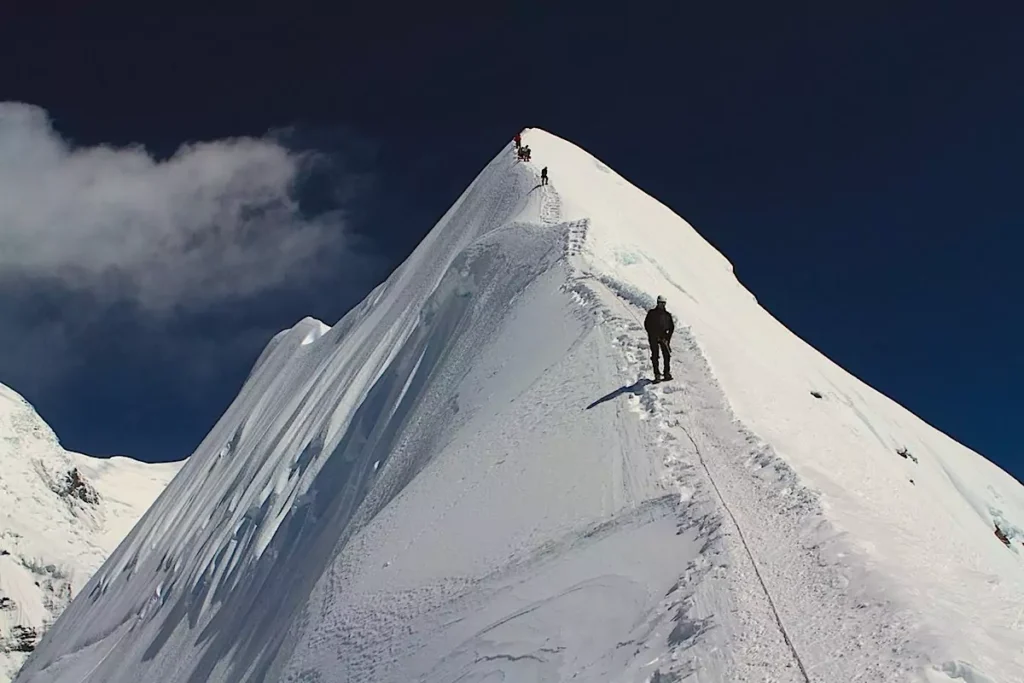
Trail Info
The journey begins with a scenic flight to Lukla, followed by the famed Everest trail passing through Phakding, Namche Bazaar, Tengboche, and Dingboche. These villages provide the cultural backdrop and gradual acclimatization needed for your ascent.
After reaching Everest Base Camp and witnessing the sunrise from Kala Patthar (5,545 m), you head toward Island Peak Base Camp. Here, you receive hands-on training in fixed-rope use, glacier travel, and safety techniques before beginning your summit push on a glaciated slope with rope-assisted sections. The total one-way distance ranges from 155–220 km.
Highlights
- Combine the Everest Base Camp trek with a summit of Island Peak (6,189 m)
- Hands-on mountaineering training with fixed-rope and glacier skills
- Unmatched Himalayan panoramas from Kala Patthar and Island Peak summit
- Ideal for fit trekkers seeking their first major Himalayan peak climbing experience
Yala Peak Climbing with Gosaikunda & Helambu Trek
Yala Peak (5,550 m) is one of the easiest and most accessible trekking peaks in Nepal, making it a great introduction to peak climbing in Nepal. This 16-day adventure combines the thrill of a Himalayan summit with cultural exploration through Langtang Valley, the sacred lakes of Gosaikunda, and the scenic Helambu region. It’s a perfect blend of climbing, trekking, and spiritual immersion.
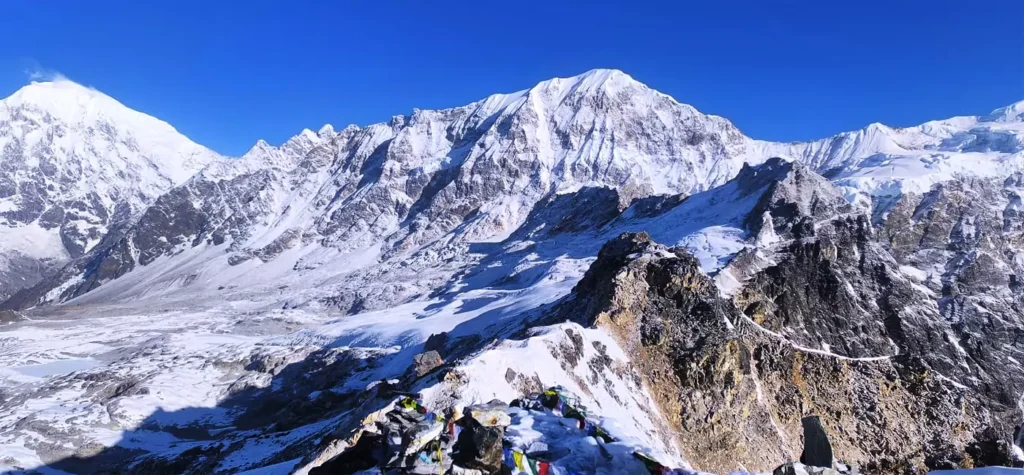
Trail Info
The trek begins with a drive from Kathmandu to Syabrubesi, followed by a scenic trail through Lama Hotel, Langtang Village, and Kyanjin Gompa. From here, you trek to Yala Peak Base Camp and prepare for summit day with light climbing instruction.
The ascent of Yala Peak is non-technical but rewarding, offering panoramic views of Langtang Lirung (7,246 m), Dorje Lakpa (6,990 m), and Shishapangma (8,027 m). After the climb, the journey continues through the sacred lakes of Gosaikunda and over the Laurebina La Pass (4,610 m), ending in the lush Helambu region before returning to Kathmandu. Total distance covered is approximately 80–100 km one way.
Highlights
- A perfect non-technical Himalayan peak for those starting peak climbing in Nepal, offering stunning views and an achievable challenge.
- Scenic trek through Langtang Valley and cultural immersion in Kyanjin Gompa
- Visit to the sacred Gosaikunda Lake and crossing of Laurebina La Pass
- Wide Himalayan views from the summit: Shishapangma, Langtang Lirung, and more
Pisang Peak Climbing
Pisang Peak, at 6,019 meters, is a sought-after summit for peak climbing in Nepal’s Annapurna region. This climb offers an incredible blend of trekking and mountaineering with stunning Himalayan views, including Annapurna, Dhaulagiri, and Gangapurna. It’s perfect for climbers seeking a rewarding but manageable technical challenge combined with cultural experiences in remote mountain villages and pilgrimage sites.
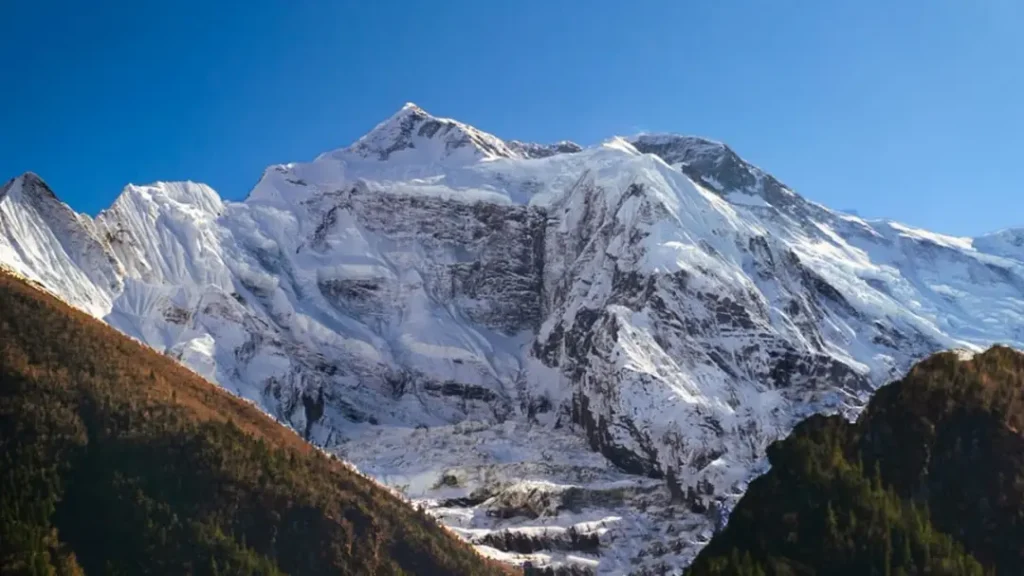
Trail Info
The journey begins with a drive from Kathmandu to Dharapani, followed by trekking through charming villages such as Pisang and Manang. Covering approximately 40 km one way, the trail gradually climbs toward Pisang Base Camp and the peak itself.
After summiting, the route descends toward Muktinath, crossing the famous Thorong La Pass. The trek concludes with scenic flights from Jomsom to Pokhara, and then a drive back to Kathmandu.
Highlights
- Trek and climb Pisang Peak in the Annapurna region
- Spectacular Himalayan views from the summit, including Annapurna and Dhaulagiri
- Cross the iconic Thorong La Pass, the world’s highest mountain pass
- Visit sacred pilgrimage sites like Muktinath and explore the Jomsom region
Chulu West Peak Climbing
Chulu West Peak stands at 6,419 meters and is one of the most sought-after climbing peaks in Annapurna region. This expedition offers a thrilling yet non-technical peak climbing experience combined with breathtaking views of Himalayan giants like Dhaulagiri, Annapurna, Nilgiri, and Manaslu. Perfect for climbers with good fitness and trekking experience, Chulu West challenges you while immersing you in the stunning landscapes and rich culture of the Annapurna Circuit.
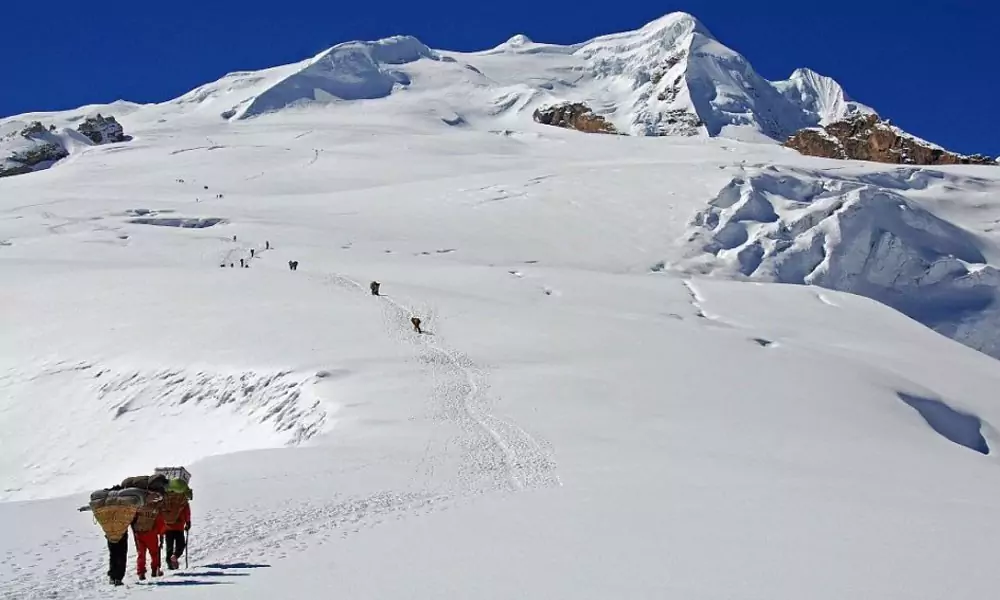
Trail Info
Your Chulu West Peak climbing journey begins with trekking through the scenic Manang Valley, known for its unique culture and high-altitude beauty. The route covers around 40 km one way, including the iconic Thorong La Pass at 5,416 meters.
After summiting Chulu West, you descend via Thorong La Pass, continuing to the sacred site of Muktinath. This trek-climb combination offers spectacular mountain views and cultural immersion, making it a memorable peak climbing adventure in Nepal.
Highlights
- Summit Chulu West Peak (6,419 m), a challenging but achievable climb
- Trek through the culturally rich and scenic Manang Valley
- Cross the legendary Thorong La Pass (5,416 m), one of the highest trekking passes
- Enjoy panoramic views of Dhaulagiri, Annapurna, Manaslu, and more
Pokalde Peak Climbing
Lying 12 km south-west of Mt. Everest, Pokalde Peak, also known as Dolma Ri, is one of the easier and shorter trekking peaks in Nepal. The climb involves a relatively short 650-meter ascent from its base camp to the summit, often achievable without ice axes or crampons. From the summit, climbers enjoy spectacular views of Everest, Makalu, Ama Dablam, and Pumori. Pokalde Peak is popular among those seeking a less technical peak climbing experience while still enjoying the breathtaking landscapes and culture of the Everest region. It is often combined with nearby climbs such as Island Peak and Lobuche East for a comprehensive peak climbing adventure.
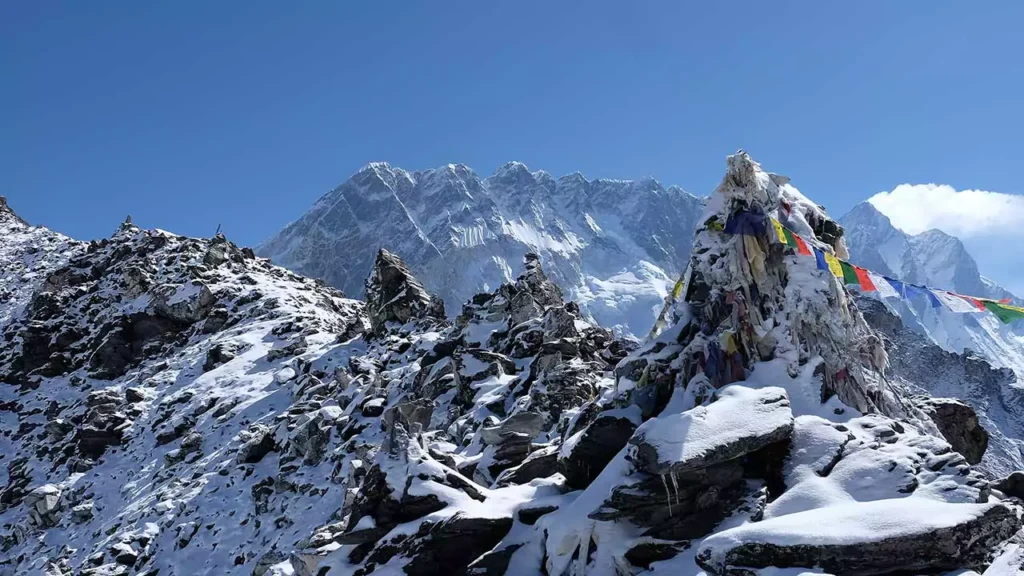
Trail Info
The climb to Pokalde Peak typically follows the classic Everest Base Camp trekking route through Sherpa villages like Namche Bazaar, Tengboche, and Dingboche. From Dingboche, the trail diverges to Pokalde Base Camp, and then crosses the Kongma La Pass (5,535 m) to reach the High Camp.
The short but rewarding summit push provides climbers with panoramic views of the Himalayan giants. This route offers a balance of trekking and peak climbing, suitable for those looking to experience Everest’s surrounding peaks with moderate technical challenge.
Highlights
- One of the easiest trekking peaks near Everest with a relatively short summit climb
- Stunning summit views of Everest, Makalu, Ama Dablam, and Pumori
- Combines well with other popular Everest region peaks for a multi-peak climbing experience
- Accessible introduction to peak climbing in Nepal with classic Everest trail scenery
Why Peak Climbing in Nepal?
In Nepal, peak climbing combines high-altitude adventure with stunning Himalayan scenery. With over 30 trekking peaks above 5,000 meters, climbers can choose everything from non-technical routes like Pokalde Peak and Yala Peak, to more demanding ascents like Chulu West, Island Peak, Mera Peak, and Lobuche East.
These peaks not only offer panoramic views of Everest, Makalu, and Annapurna ranges, they also provide an excellent stepping stone for future mountaineering goals. Supported by experienced guides and well-established routes, Nepal remains a top destination for aspiring and seasoned climbers alike.
Best Time for Peak Climbing in Nepal
The ideal time for peak climbing in Nepal is spring (March to May) and autumn (September to November). These seasons bring stable weather, dry trails, and crystal-clear mountain views, key factors for a safe and successful climb. If you’re planning your trip around the best time to visit Nepal, these climbing windows align perfectly with trekking and cultural activities too.
Spring is perfect for summiting Island Peak and Mera Peak, with mild temperatures and vibrant alpine landscapes. In autumn, peaks like Lobuche East and Chulu West benefit from cooler, drier air and excellent visibility. Lower peaks such as Pokalde and Yala are also great year-round options for beginners looking for a shorter, less technical climb.
Conclusion
Knowing how to prepare for mountain climbing is crucial, whether you’re standing on the summit of Lobuche East, navigating the icy slopes of Mera Peak, or reaching the dramatic ridge of Island Peak. Every Himalayan summit offers something unforgettable and for those seeking less vertical adventure, the diverse treks in Nepal offer equally stunning rewards. Add to that the charm of lower peaks like Pokalde or the challenge of Chulu West, and Nepal truly has something for every climbing level.
Ready to plan your adventure? Let BeThere guide you to the top.
Table of Content
Frequently Asked Questions
What is the difference between trekking and peak climbing?
Trekking generally involves walking on established trails without the need for technical climbing skills. Peak climbing includes mountaineering techniques like using ropes, crampons, and navigating glaciers to reach a mountain summit.
Is peak climbing suitable for beginners?
Yes, many trekking peaks in Nepal, such as Pokalde and Yala, are beginner-friendly and require minimal technical skills. However, more challenging peaks like Lobuche East or Chulu West need prior experience or professional guides.
Do I need a guide for peak climbing?
While some non-technical peaks can be climbed independently by experienced trekkers, hiring a guide is highly recommended for safety, navigation, and support, especially on technical climbs.
Can peak climbing be combined with trekking?
Yes, many climbs are combined with famous trekking routes like Everest Base Camp or the Annapurna Circuit, offering a rich cultural experience alongside the adventure.
Is altitude sickness common and how is it managed?
Altitude sickness is a common risk above 3,000 meters but can be managed with proper acclimatization, hydration, and rest. Climbers are advised to ascend slowly, recognize symptoms early, and if needed, descend immediately. Experienced guides help monitor climbers’ health throughout the expedition.
What should I pack for peak climbing in Nepal?
You’ll need a mix of trekking and climbing gear. Essentials include:
- Mountaineering boots
- Ice axe and crampons
- Harness and helmet
- Thermal layers and down jacket
- Sleeping bag (rated -15°C or lower)
- Sunglasses and sunscreen
- Energy snacks and water purification tablets
Need help choosing a trail?
Connect with a local and plan your perfect trek.

